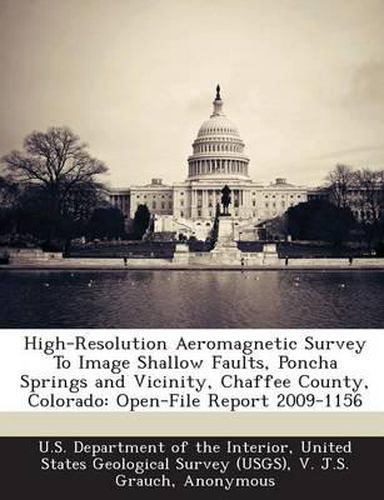Readings Newsletter
Become a Readings Member to make your shopping experience even easier.
Sign in or sign up for free!
You’re not far away from qualifying for FREE standard shipping within Australia
You’ve qualified for FREE standard shipping within Australia
The cart is loading…






High-resolution aeromagnetic data were acquired over the town of Poncha Springs and areas to the northwest to image faults, especially where they are concealed. Because this area has known hot springs, faults or fault intersections at depth can provide pathways for upward migration of geothermal fluids or concentrate fracturing that enhances permeability. Thus, mapping concealed faults provides a focus for follow-up geothermal studies. Fault interpretation was accomplished by synthesizing interpretative maps derived from several different analytical methods, along with preliminary depth estimates. Faults were interpreted along linear aeromagnetic anomalies and breaks in anomaly patterns. Many linear features correspond to topographic features, such as drainages. A few of these are inferred to be fault-related. The interpreted faults show an overall pattern of criss-crossing fault zones, some of which appear to step over where they cross. Faults mapped by geologists suggest similar crossing patterns in exposed rocks along the mountain front. In low-lying areas, interpreted faults show zones of west-northwest-, north-, and northwest-striking faults that cross 3 km ( 2 mi) west-northwest of the town of Poncha Springs. More easterly striking faults extend east from this juncture. The associated aeromagnetic anomalies are likely caused by magnetic contrasts associated with faulted sediments that are concealed less than 200 m (656 ft) below the valley floor. The faults may involve basement rocks at greater depth as well. A relatively shallow (
$9.00 standard shipping within Australia
FREE standard shipping within Australia for orders over $100.00
Express & International shipping calculated at checkout
High-resolution aeromagnetic data were acquired over the town of Poncha Springs and areas to the northwest to image faults, especially where they are concealed. Because this area has known hot springs, faults or fault intersections at depth can provide pathways for upward migration of geothermal fluids or concentrate fracturing that enhances permeability. Thus, mapping concealed faults provides a focus for follow-up geothermal studies. Fault interpretation was accomplished by synthesizing interpretative maps derived from several different analytical methods, along with preliminary depth estimates. Faults were interpreted along linear aeromagnetic anomalies and breaks in anomaly patterns. Many linear features correspond to topographic features, such as drainages. A few of these are inferred to be fault-related. The interpreted faults show an overall pattern of criss-crossing fault zones, some of which appear to step over where they cross. Faults mapped by geologists suggest similar crossing patterns in exposed rocks along the mountain front. In low-lying areas, interpreted faults show zones of west-northwest-, north-, and northwest-striking faults that cross 3 km ( 2 mi) west-northwest of the town of Poncha Springs. More easterly striking faults extend east from this juncture. The associated aeromagnetic anomalies are likely caused by magnetic contrasts associated with faulted sediments that are concealed less than 200 m (656 ft) below the valley floor. The faults may involve basement rocks at greater depth as well. A relatively shallow (